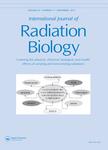版权所有:内蒙古大学图书馆 技术提供:维普资讯• 智图
内蒙古自治区呼和浩特市赛罕区大学西街235号 邮编: 010021

作者机构:DRDO Div Stem Cell & Gene Therapy Res INMAS Delhi 110054 India
出 版 物:《INTERNATIONAL JOURNAL OF RADIATION BIOLOGY》 (国际辐射生物学杂志)
年 卷 期:2020年第96卷第5期
页 面:671-688页
核心收录:
学科分类:0710[理学-生物学] 07[理学] 09[农学] 0827[工学-核科学与技术] 1009[医学-特种医学]
基 金:Defence Research Development Organisation (DRDO) India [ST/P1/2008/INM/311/1.6]
主 题:Microarray data analysis cell survival clustering coregulated expression network analysis bile acid synthesis
摘 要:Purpose: Lithium chloride (LiCl) is clinically used for manic disorders. Its role has been shown in improving cell survival by decreasing Bax and p53 expression and increasing Bcl-2 concentration in the cell. This potential of LiCl is responsible for reducing irradiated cell death. In this study, we have explored the role of LiCl as a radioprotectant affecting survival genes. Materials and methods: To find out the cellular response upon LiCl pretreatment to radiation-exposed KG1a cells;viability, clonogenic assay and microarray studies were performed. This was followed by the detection of transcription factor binding motif in coregulated genes. These results were confirmed by reverse transcription-polymerase chain reaction (RT-PCR) and chromatin immunoprecipitation (CHIP). Results: LiCl improved irradiated KG1a cell survival and its clonogenicity at 2 mM concentration (clinically used). Microarray data analysis showed differential expression of cell-protecting genes playing an important role in apoptosis, cell cycle, adhesion and inflammation, etc. The coregulation analysis revealed genes involved in bile acid biosynthesis were also affected by LiCl treatment, these genes are likely to be responsible for radiation-induced gastrointestinal (GI) syndrome through bile production. Conclusions: This is the first study with respect to global genetic expression upon LiCl treatment to radiation-exposed cells. Our results suggest considering repurposing of LiCl as a protective agent for radiation injury.